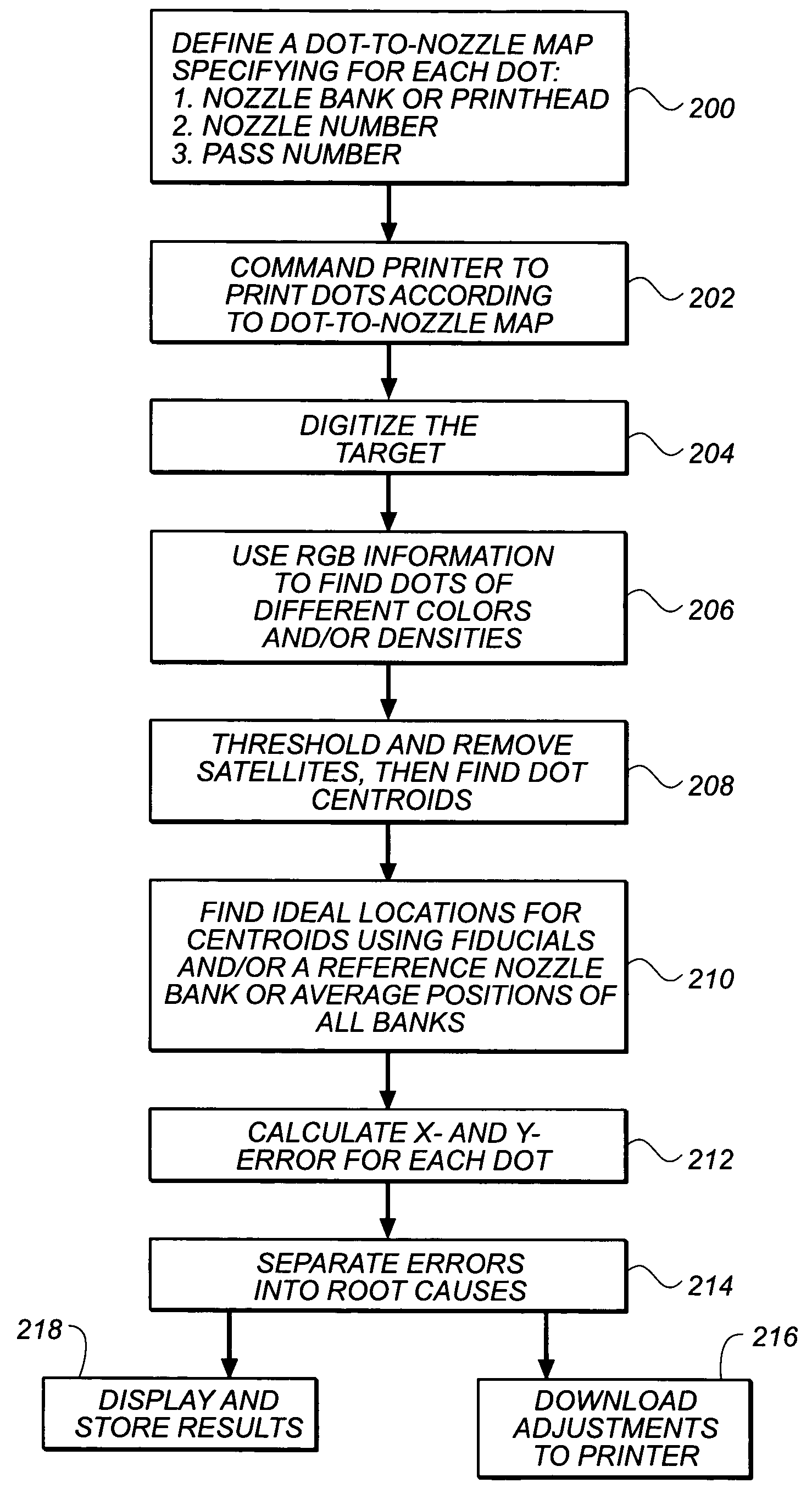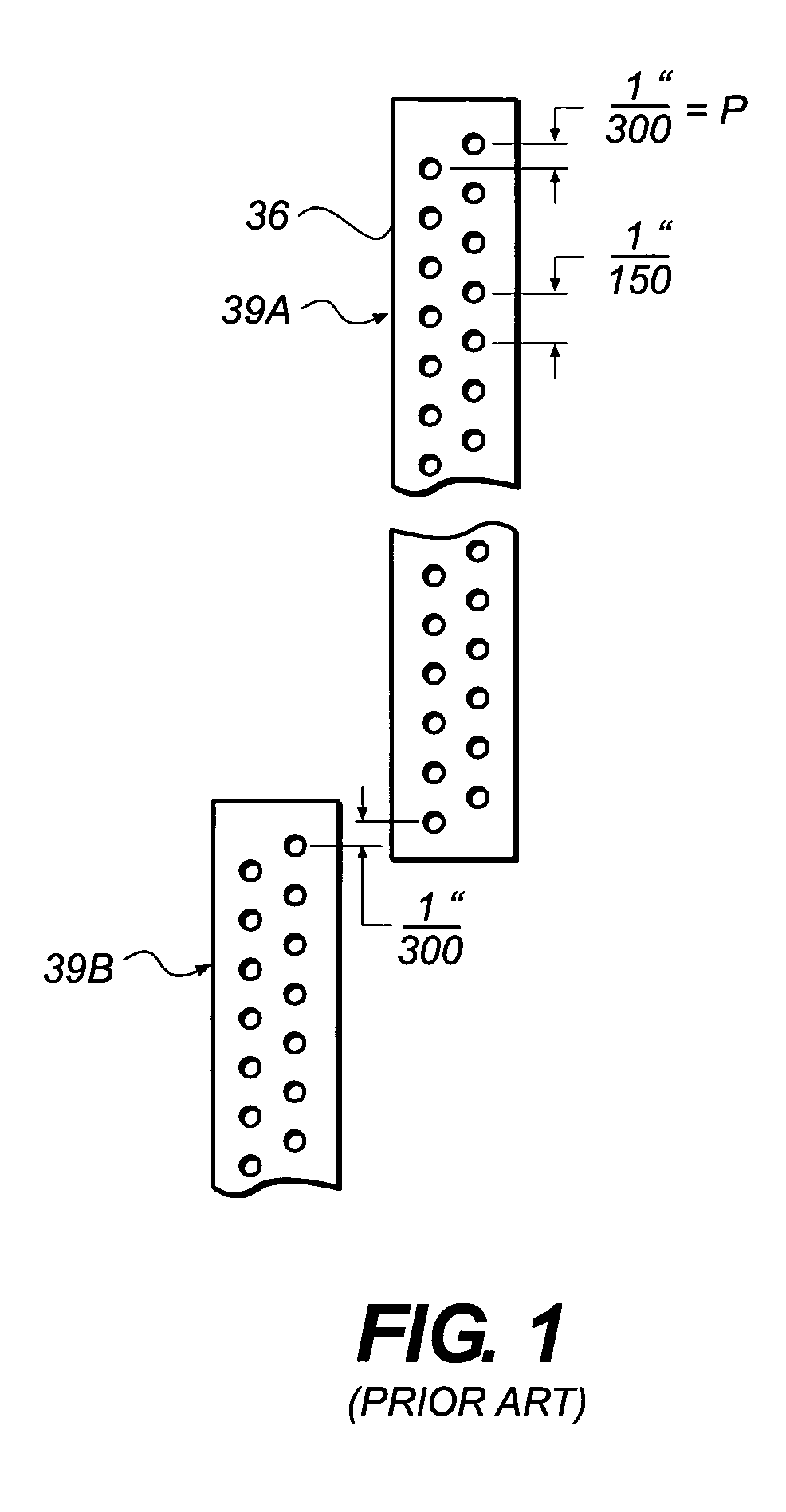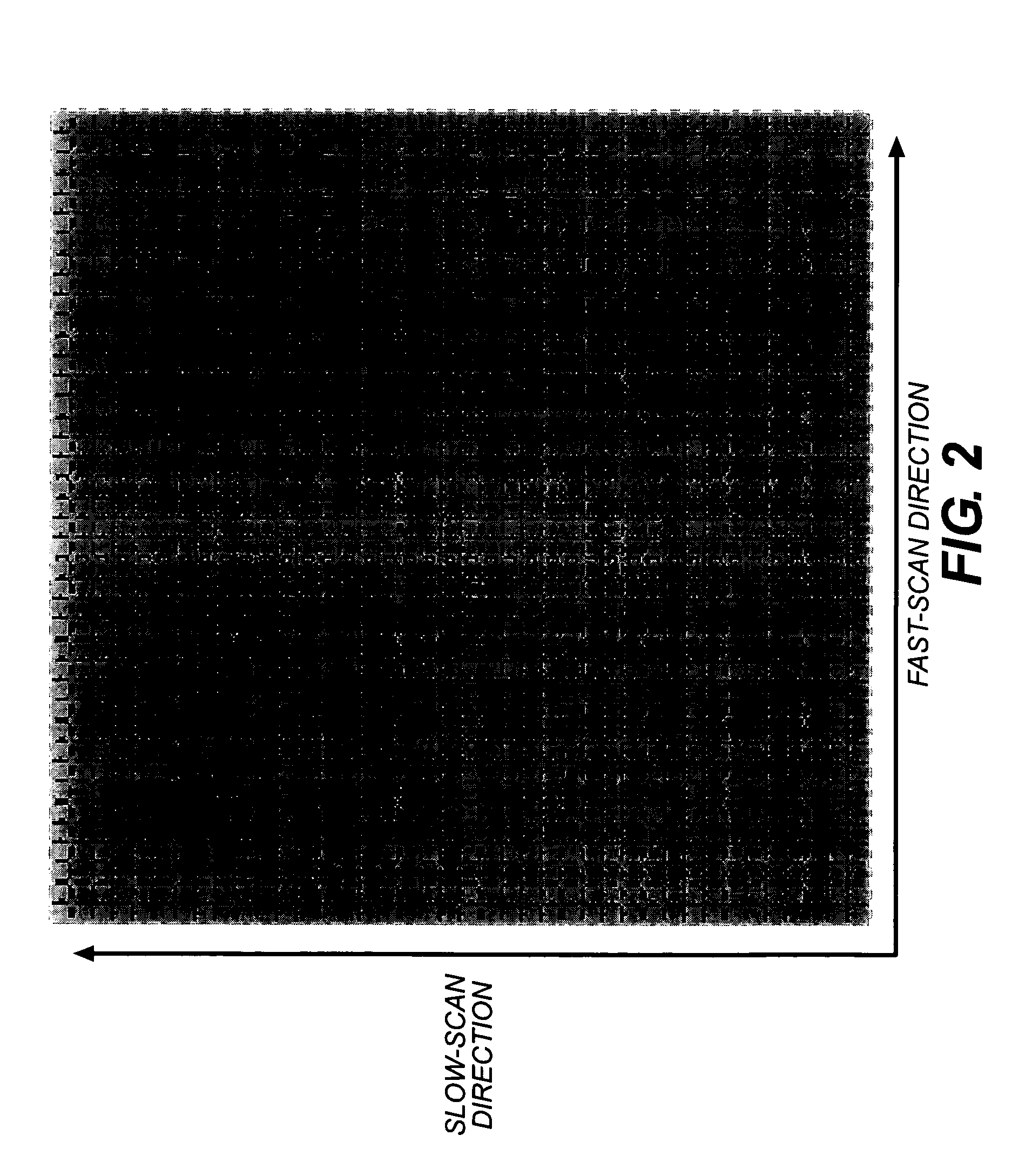Today the fabrication of pagewidth inkjet printheads is relatively complex and they have not gained a broad following.
In addition there are problems associated with high-resolution printing in that simultaneous placement of ink drops adjacent to each other can create coalescence of the drops resulting in an image of relatively
poor quality.
If they are not well registered, then the
maximum density attainable by the printer will be compromised and banding artifacts will appear.
Even more troublesome is a slight, relative
skew between the two nozzle banks as shown in FIG. 5.
At the other end of the swath, however, poor registration is incurred and banding is observed with a period equal to the height of the swath.
Even very slight misalignments can result in objectionable image artifacts.
Large physical separations between two nozzle banks can make proper alignment even more difficult.
Requiring precise alignment of two sets of nozzle banks being separated by such a distance is very challenging using typical techniques.
These are just some of the ways that the
image quality produced by an inkjet printer can be compromised by poor registration of the various nozzle banks.
Additionally, poor registration between the color planes can result in blurry or noisy images and overall loss of detail.
These problems make good registration and alignment of all the nozzle banks within an inkjet printer critical to ensure
good image quality.
However, this adds to the number of nozzle banks that must be aligned, thereby increasing the possibility for misalignment and the labor required to properly align all the nozzle banks.
This does not increase the count of nozzle banks, but usually results in longer nozzle banks as increasing the nozzle density of a nozzle bank typically requires a completely new print head design and / or a new manufacturing process.
Longer nozzle banks also increase the difficulty of alignment of the nozzle banks as the sensitivity to angular displacements increases proportionately.
These sensitivities further complicate the nozzle bank alignment process.
Yet another complicating factor is the use of multiple drop sizes of which many new print head designs are capable.
Visual techniques are disadvantaged in many ways.
First, for a printer with many nozzle banks (24 separate nozzle banks is not uncommon), multiple print head heights, and multiple
carriage velocities, the number of alignments can become overbearing as each variation adds multiplicatively to the rest.
Secondly, only a
moderate level of accuracy is attainable with most of these techniques and finely tuned printers require a higher degree of accuracy attainable by most of these techniques.
The level of accuracy is further compromised between all color records by using a single color as the only reference.
Thirdly, interactions can occur between the various alignment parameters, which further degrade the ultimate quality of alignment that can be obtained through these visual techniques, or multiple iterations are required, thereby increasing the labor of the effort.
Firstly, they require additional hardware costs for each printer as a separate optical sensor and accompanying
electronics are required.
Secondly, the optical sensors are typically of the LED variety with economical
optics and cannot provide the high degree of accuracy required of finely tuned, high-end printers.
Thirdly, these sensors require significant averaging to create a reliable
signal, making the amount of receiver required to perform the alignment larger than one would desire.
Furthermore, this high degree averaging necessitates a separate measurement for each nozzle bank, requiring even more ink and receiver as the number of nozzle banks increases.
Some techniques provide means by which slow-scan misalignments may be determined, but these measurements require separate, additional patterns, further consuming additional ink and receiver.
Furthermore, this fast-scan limitation makes determination of nozzle bank
skew very difficult or impossible (U.S. Pat. No. 5,250,956, for example, requires 8 separate measurements to ascertain nozzle bank
skew and U.S. Pat. No. 6,076,915 makes no provision for measurement of skew) and, as demonstrated in FIG. 5, this is a critical alignment dimension.
Another result of the fast-scan directional limitation is the inability to measure errors in the advance of the receiver, yet another critical alignment variable.
While effective at detecting print head performance problems, it is incapable of detecting minute alignment errors shown to be detrimental in inkjet printing using multiple nozzle banks.
Additionally, the invention disclosed in U.S. Pat. No. 6,347,857B1 requires additional printer hardware and special receiver for the analysis, adding to total printer cost.
 Login to View More
Login to View More  Login to View More
Login to View More 


